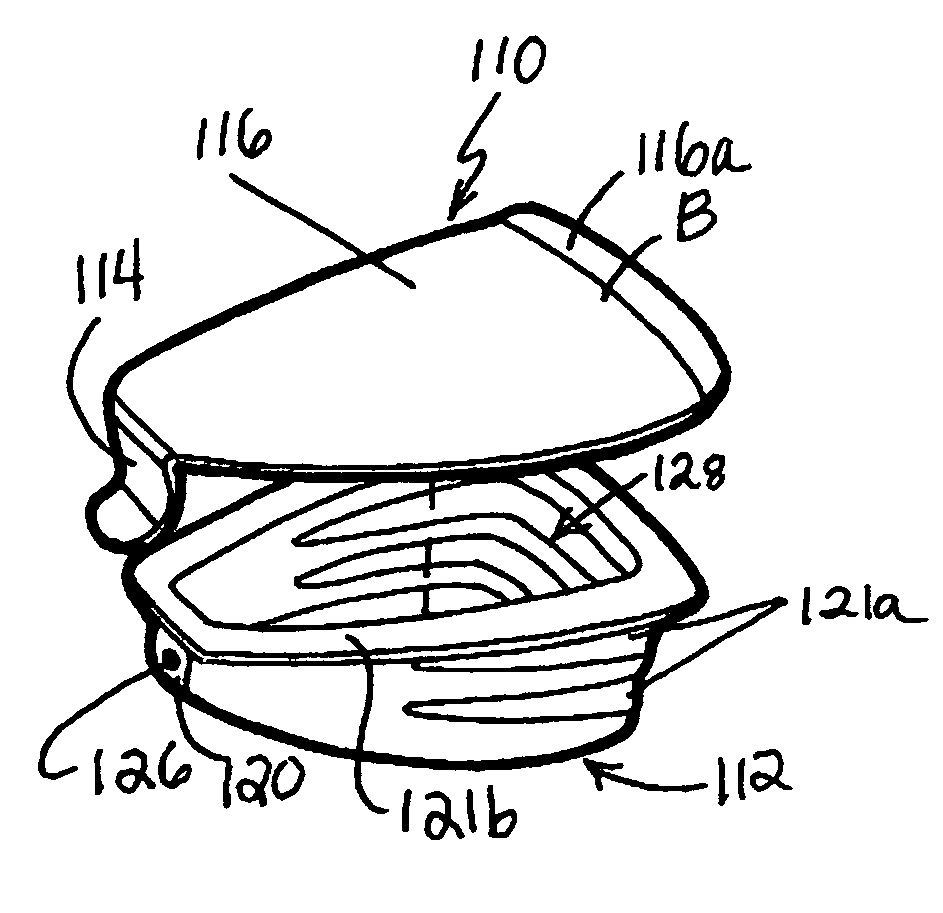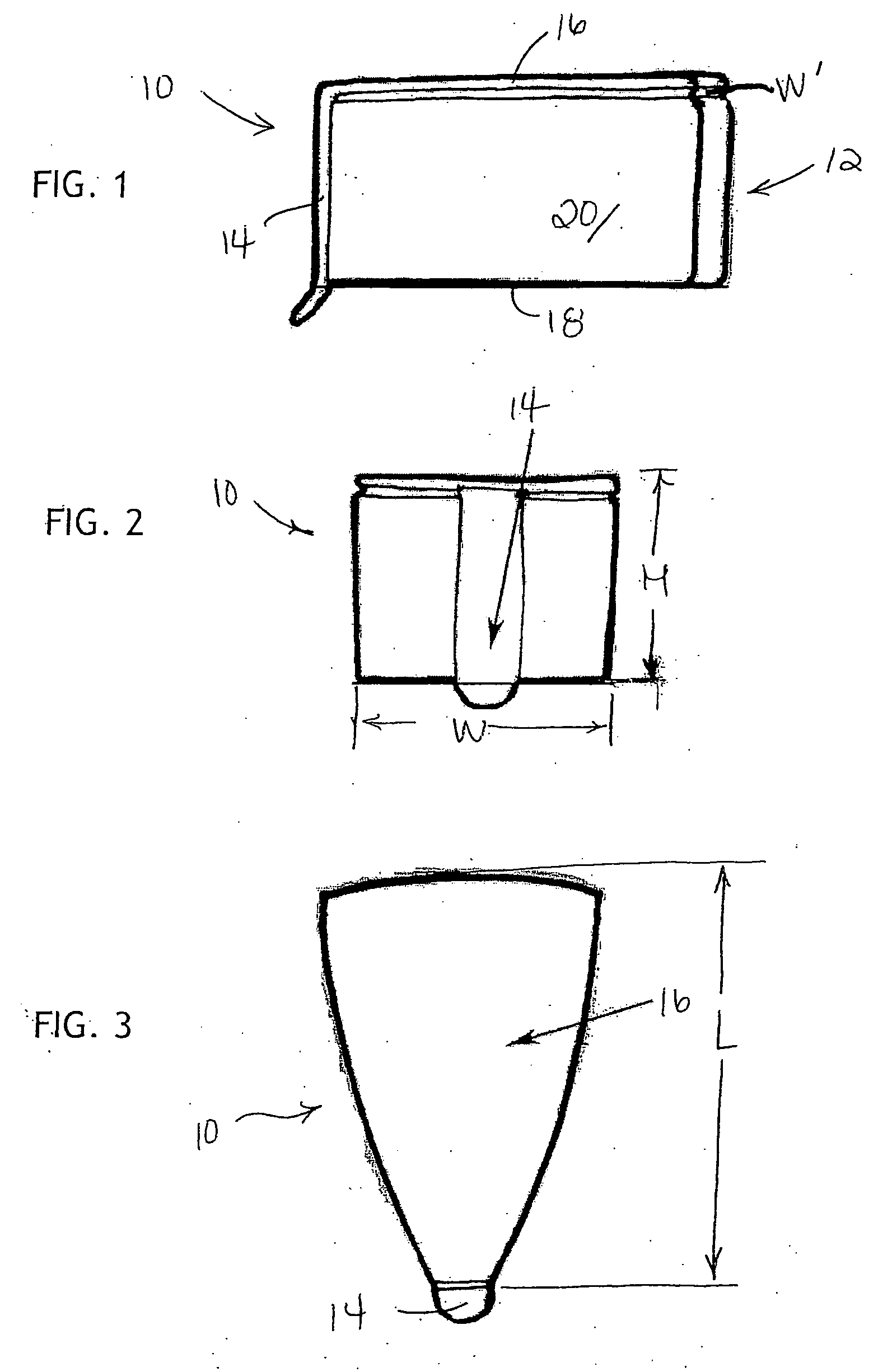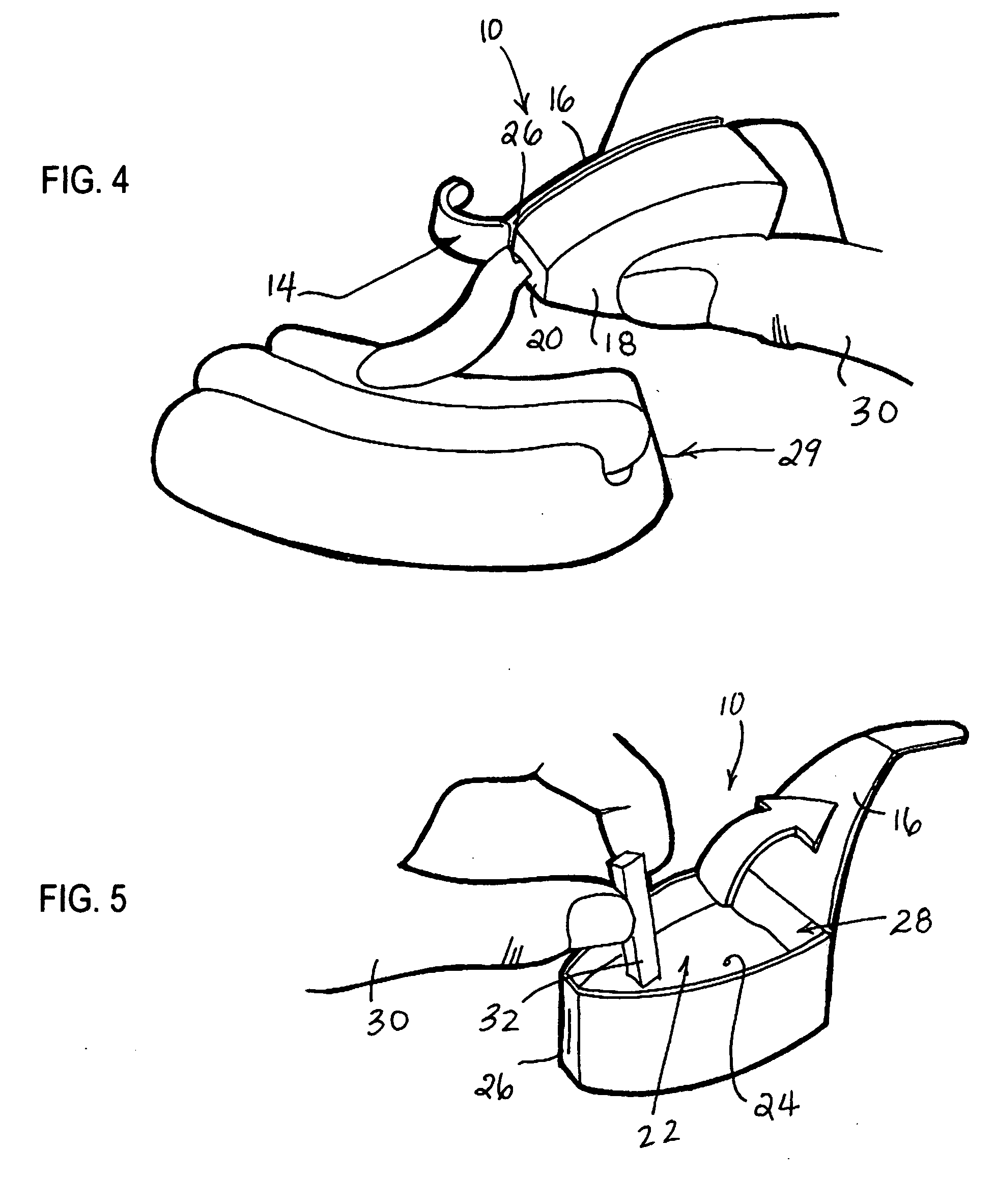Dual mode container
a container and dual-mode technology, applied in the field of containers, can solve the problems of large opening size, difficult control of opening size, and difficulty in distributing fluids,
- Summary
- Abstract
- Description
- Claims
- Application Information
AI Technical Summary
Problems solved by technology
Method used
Image
Examples
Embodiment Construction
[0089] Referring to FIGS. 1-3, first exemplary container 10 is illustrated. Container 10 comprises body 12, first closure or movable lid 14 and second closure or movable lid 16, which is part of body 12 as discussed below. First closure or lid 14 and second closure or lid 16 are located in different planes and seated in different planes.
[0090] Referring to FIGS. 1, 4, and 5, body 12 includes top watt or second closure 16, bottom wall 18 and outwardly extending sidewall 20 so that chamber 22 is defined thereby. Chamber 22 contains substance 24. Sidewall 20 further includes first opening 26 and sidewall 20 also defines second opening 28. First and second openings 26 and 28 are in fluid communication with chamber 22. Sidewall 20 may include an optional weakened area W′ (see FIG. 1) at the top edge to allow second lid 16 to be easily removed.
[0091] Referring to FIGS. 1 and 5, first movable lid 14 is operatively associated with or seats first opening 26 in a closed position (as shown i...
PUM
| Property | Measurement | Unit |
|---|---|---|
| height | aaaaa | aaaaa |
| width | aaaaa | aaaaa |
| length | aaaaa | aaaaa |
Abstract
Description
Claims
Application Information
 Login to View More
Login to View More - R&D
- Intellectual Property
- Life Sciences
- Materials
- Tech Scout
- Unparalleled Data Quality
- Higher Quality Content
- 60% Fewer Hallucinations
Browse by: Latest US Patents, China's latest patents, Technical Efficacy Thesaurus, Application Domain, Technology Topic, Popular Technical Reports.
© 2025 PatSnap. All rights reserved.Legal|Privacy policy|Modern Slavery Act Transparency Statement|Sitemap|About US| Contact US: help@patsnap.com



